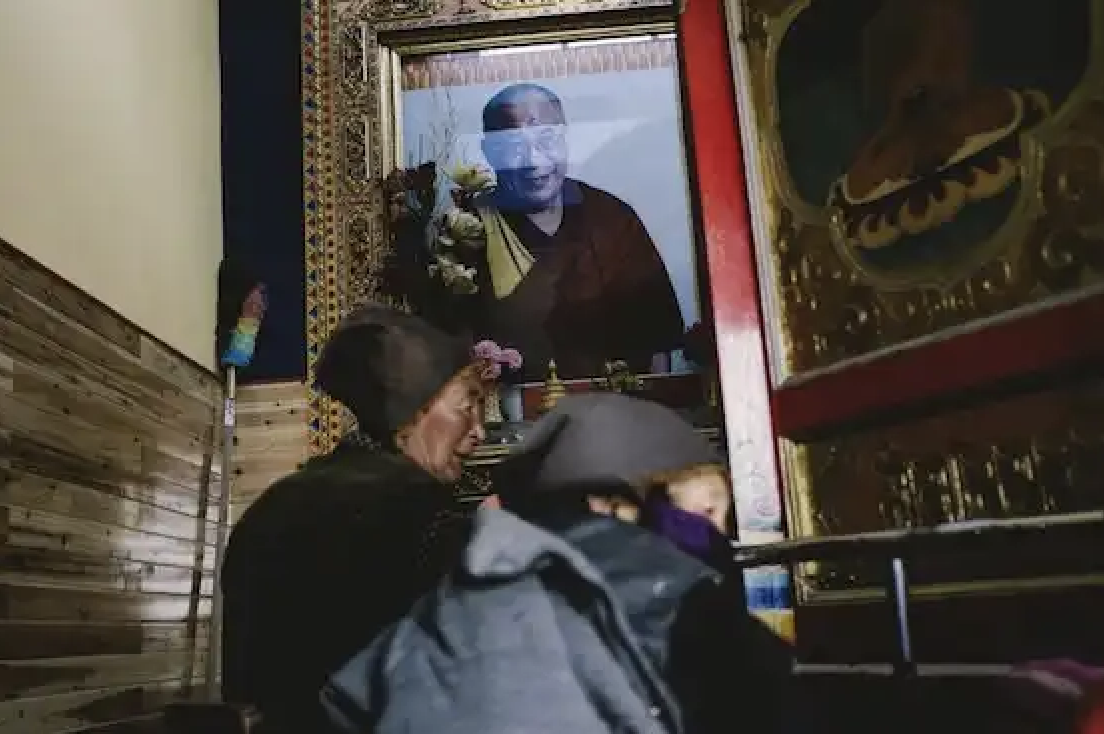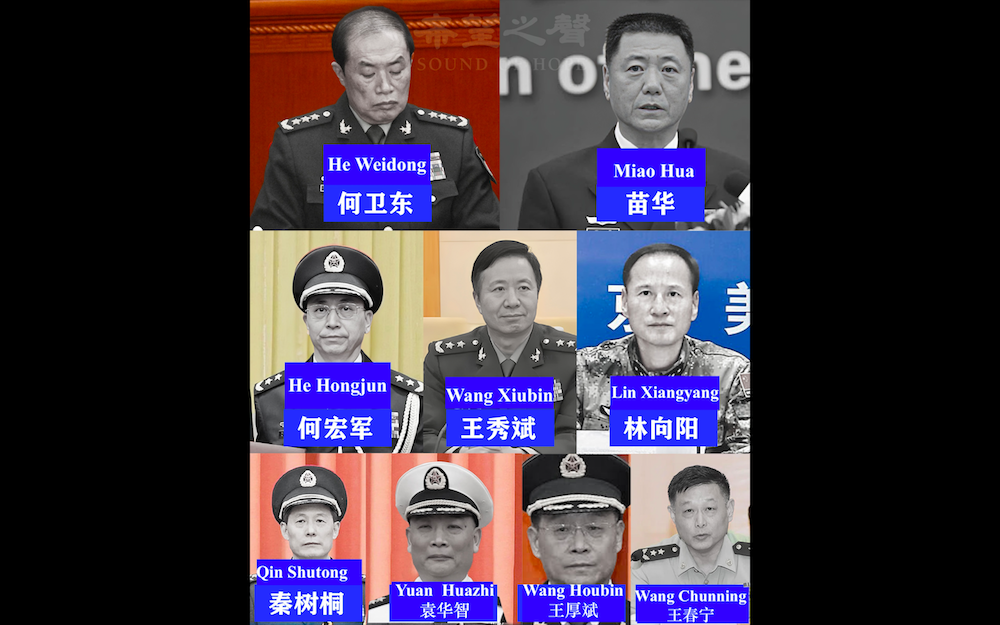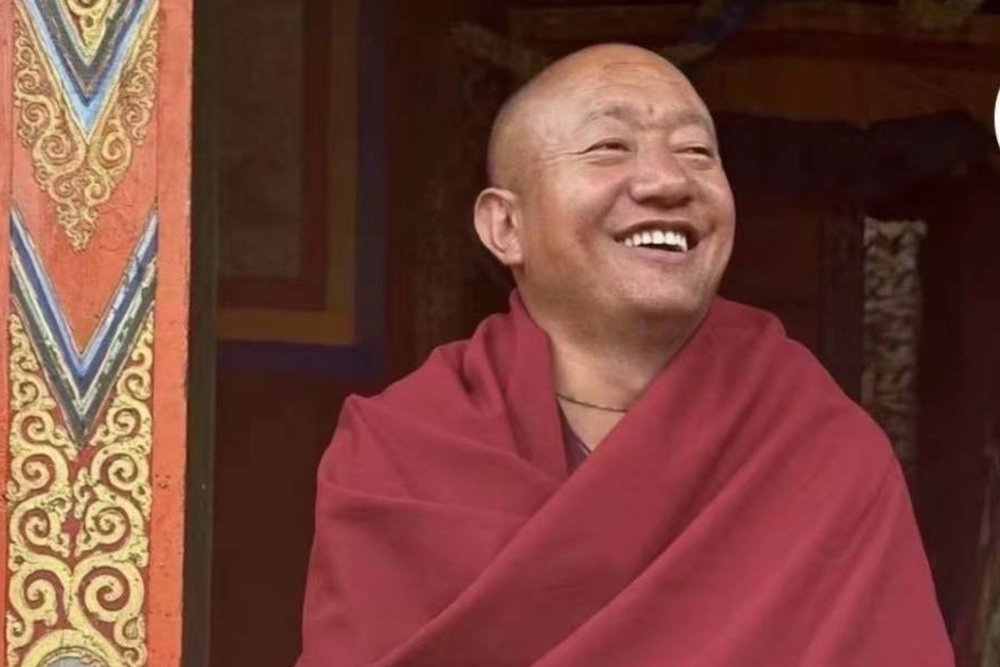Increase in Sichuan; Decline in Qinghai and Gansu
After reaching a peak of approximately 800 Tibetan political prisoners by 1996, there was a rapid decline in their number from 1997 to 2001. The decline was due to a large number of releases as Tibetans completed sentences, as well as fewer new detentions. This pattern has changed over the past two years. The decline slowed during 2002 and appears to have ceased during 2003. The surge of political imprisonment in Sichuan Province appears to have offset the number of expiring sentences in the Tibet Autonomous Region (TAR). The Tibetan prefectures Kardze (Ganzi) and Ngaba (Aba) in Sichuan have become more restive as authorities intensify religious repression and persecution of popular religious leaders. In contrast, the total of Tibetan political prisoners known to be currently held in Qinghai and Gansu Provinces is less than ten.
TIN’s political prisoner database records 145 Tibetans as in (or likely to be in) a prison or detention centre as of January 2004. A year ago the number stood at 149. Just under half are known to be serving sentences at Drapchi Prison in Lhasa, recently renamed Tibet Autonomous Region Prison (previously Tibet Autonomous Region Prison No. 1). Although TIN cannot provide a complete account of current Tibetan political imprisonment, it publishes information on cases that are corroborated and sufficiently detailed. There are additional reports of political detention about which TIN awaits further detail and corroboration. The total figure of current detention may be ten to 20 higher than enumerated in this report. Of course, additional instances of detention are likely to exist about which no reports have reached monitoring groups.
Nine (six percent) of the current political prisoners are female. Six are nuns, one is a former nun who worked as child care provider, another is an amputee seamstress, and the ninth is the mother of Gedun Choekyi Nyima, the Panchen Lama recognised by the Dalai Lama. (China asserts that Dechen Choedron and Konchog Phuntsog, the PL’s parents, are not “detained” but are living in a sequestered manner in a secret location by their own choice.) Sentencing information is known for five of the women, who are in Drapchi serving sentences ranging from four to 16 years. Three have extended sentences. Nun Phuntsog Nyidrol, imprisoned for nearly 15 years, is the longest serving female political prisoner. Her 17-year sentence has been reduced, reportedly by one year in 2002, for good behaviour. Chinese officials have told interlocutors during sessions of the human rights dialogue that her sentence will expire on 21 March 2005. Hastening her release has been a priority for human rights advocates. She is one of three Buddhist nuns discussed in TIN’s Rukhag 3: The Nuns of Drapchi Prison who remain imprisoned. The others are Chogdrub Drolma and Jangchub Drolma of Gyabdrag and Galo nunneries respectively. Both were jailed in 1995 and are serving 11-year sentences which include an extension.
Two thirds of the 136 male Tibetan political prisoners documented by TIN as currently imprisoned are monks, former monks, or reincarnate lamas (trulku). The three monasteries with the most imprisoned monks are in the TAR: 12 from Ganden, eight from Drepung, and seven from Serwa Monastery in Pashoe County, Chamdo Prefecture. At least four monks are from each of the following monasteries: Achog and Khangmar, both in Kakhog (Hongyuan) County, Ngaba Tibetan and Qiang Autonomous Prefecture (T&QAP); Kardze Gepheling, in Kardze County, Kardze TAP; Serthar Buddhist Institute, in Serthar County, Kardze TAP; Themthog, in Dzogang County, Chamdo Prefecture; and Tsanden, in Sog County, Nagchu Prefecture (TAR). The other prisoners are a mix of farmers, herders, traders, tradesmen, businessmen, professionals, and students.
The longest serving males are Drepung monks Ngawang Phuljung, Ngawang Gyaltsen, Ngawang Oezer, and Jamphel Jangchub. Like Phuntsog Nyidrol, they have been imprisoned for nearly 15 years and governments and human rights advocates have long sought their release. Ngawang Oezer’s sentence was reduced from 17 to 15 years in 1992. He is due for release on 18 April this year according to official information and will become the first released of five monks whom Chinese authorities have labelled as leaders of a group of Drepung monks who staged a protest march in Lhasa on 27 September 1987 — thereby setting in motion the modern era of Tibetan political protest. Jamphel Jangchub, another of the group, received a three-year reduction of his 19-year sentence in 1994 and is reportedly scheduled for release on 7 April 2005. Ngawang Gyaltsen and Ngawang Phuljung have not received reductions and face release dates in 2006 and 2008 respectively. The fifth accused leader, Jampal Khedrub, died in Drapchi in July 1996 from injuries sustained during a session of interrogation and torture.
A current case attracting international interest is that of Tenzin Deleg Rinpoche, a popular Buddhist teacher and resident of Nyagchu County (Kardze TAP) also known for advocacy of socially and environmentally responsible behaviour. He and a young relative, Lobsang Dondrub, were detained on 7 April 2002 and convicted the following December of causing explosions and distributing pro-independence leaflets. Both were sentenced to death on the explosives charge, which was prosecuted as an offence against public security. The alleged leafleting was treated as threat against state security. Tenzin Deleg appealed his conviction, which included a two-year reprieve of execution. On 26 January 2003 the Sichuan Higher People’s Court approved Lobsang Dondrub’s death sentence and upheld Tenzin Deleg’s conviction. Lobsang Dondrub was executed the same day.
Many Tibetans in the area reportedly believe that the charges against the Rinpoche were fabricated. A cassette tape allegedly recorded secretly in his cell in January 2003 features Tenzin Deleg declaring his innocence and claiming that the authorities had tried to make him a scapegoat by attempting to link him to Lobsang Dondrub. The younger man had once been a monk in one of Tenzin Deleg’s monasteries — until Tenzin Deleg expelled him for misbehaviour reportedly related to “business.”
Sichuan officials told a visiting staff delegation from a western government in September 2003 that explosives and handwriting evidence had implicated Tenzin Deleg. Moreover, the officials claimed that on a public television broadcast Tenzin Deleg had confessed his guilt and likened the kindness of court and prosecution officials to that of his mother and father. The delegation requested a copy of the broadcast tape but it has not been made available. Experts monitoring the case have questioned whether prosecutors established a direct evidentiary link between Tenzin Deleg and the actual alleged crimes. Several governments have called for a thorough review of the case by China’s Supreme People’s Court. Article 51 of China’s Criminal Law states that a two-year reprieve begins on the date the judgement becomes final. 1 Article 208 of China’s Criminal Procedure Law stipulates that in the case of a reprieved death sentence, the judgment is not effective until it is approved by the provincial Higher People’s Court. 2 Tenzin Deleg’s reprieve should have begun on 26 January 2003, the date his conviction and sentence were upheld by the Sichuan Higher People’s Court. The last day of the reprieve should be 25 January 2005. A recent statement by a Chinese official indicates that he is being held in Chuandong Prison, the same Sichuan facility where Chadrel Rinpoche was imprisoned.
Political Detention on the increase in Sichuan Province.
The sentencing of Tenzin Deleg, the execution of Lobsang Dondrub, and the lengthy detention or sentencing of at least twelve others linked to the case, highlights a significant trend — rising political detention in Sichuan Province. This contrasts sharply with what may be the lowest levels of current detention in Qinghai and Gansu since the late 1980s, and with the declining number of new detentions in the TAR. Eighteen of 20 currently detained political prisoners with a detention date in 2003 are in Sichuan, according to the TIN database. Table 1 divides the currently detained political prisoners into groups according to their residence (inside or outside the TAR) and their date of detention (before 2000, or from 2000 onward). Only 10 percent of currently detained prisoners with a detention date before 2000 are in Sichuan Province compared to 56 percent of those detained in or after 2000.
| Table 1.Residence and Detention: Sichuan Province takes the lead (based on TIN data current in January 2004) |
|||
| Tibetan region | Date of detention, all yearsand currently detained (145 records total) |
Date of detention before 2000and currently detained (77 records, 53% of total) |
Date of detention 2000 onwardand currently detained (68 records, 47% of total) |
| TAR | 90 (62% of total) | 68 (88 % of total) | 22 (32% of total) |
| non-TAR | 53 (37%l) | 8 (10%) | 45 (66%) |
| Sichuan | 46 (32%) | 8 (10%) | 38 (56%) |
| Qinghai/Gansu | 7 (5%) | 0 (0%) | 7 (10%) |
| n/a | 2 (1%) | 1 (2%) | 1 (2%) |
| Total | 145 | 77 | 68 |
The prevalence of non-TAR detention in recent years is also apparent when considering total detentions from 2000 onward. Including persons who had been detained but are now released, TIN records show a total of 101 detentions during the period. Two-thirds (68) have been outside the TAR, and just over half (53) have been in Sichuan Province.
Table 2 compares information reported by TIN a year ago with the current report. In the past year, the TAR proportion of currently detained political prisoners has dropped from 71 percent to 62 percent. Of the 90 prisoners TIN can document in the TAR, seventy percent are in Drapchi. A year ago political prisoners outside the TAR accounted for 27 percent of then-current detentions. Now, based on TIN data, they make up 37 percent.
See: TIN News Update dated 10 March 2003 Changes in pattern of political detention
| Table 2.Residence of Current Tibetan Political Prisoners (comparing TIN data reported in March 2003 and February 2004) |
|||
| Region | Prefecture | Prisoners (February 2003) |
Prisoners (January 2004) |
| TAR | |||
| Lhasa (Lasa) | 65 | 53 | |
| Chamdo (Qamdo) | 21 | 17 | |
| Lhoka (Shannan) | 4 | 4 | |
| Nagchu (Naqu) | 12 | 12 | |
| Shigatse (Rikaze) | 4 | 4 | |
| Kongpo (Linzhi) | 0 | 0 | |
| Ngari (Ali) | 0 | 0 | |
| TAR total | 106 (71%) | 90 (62%) | |
| non-TAR | |||
| Kardze (Ganzi, Sichuan) | 25 | 34 | |
| Ngaba (Aba, Sichuan) | 9 | 12 | |
| Liangshan, Mili (Muli, Sichuan) | 0 | 0 | |
| Kanlho (Gannan, Gansu) | 1 | 2 | |
| Wuwei, Pari (Tianzhu, Gansu) | 1 | 1 | |
| Tsoshar (Haidong, Qinghai) | 2 | 0 | |
| Tsojang (Haibei, Qinghai) | 0 | 0 | |
| Tsonub (Haixi, Qinghai) | 0 | 0 | |
| Tsolho (Hainan, Qinghai) | 1 | 3 | |
| Malho (Huangnan, Qinghai) | 0 | 0 | |
| Golog (Guoluo, Qinghai) | 1 | 1 | |
| Yushu (Yushu, Qinghai) | 0 | 0 | |
| Siling (Xining, Qinghai) | 0 | 0 | |
| Dechen (Diqing, Yunnan) | 0 | 0 | |
| Non-TAR total | 40 (27%) | 53 (37%) | |
| n/a | 3 (2%) | 2 (1%) | |
| TAR + non-TAR total | 149 | 145 | |
Events in Sichuan Province appear to have been driven by religious repression and official hostility toward a few respected religious figures. Kardze TAP, part of what Tibetans traditionally refer to as Kham, has been the site of all three crackdowns focusing on local religious leaders. Sonam Phuntsog’s detention in October 1999 in Kardze County sparked a large protest that resulted in dozens of detentions and at least ten prison sentences, including a five-year term for Sonam Phuntsog that will expire in October this year. Official disruption of activities at the Larung Gar Buddhist Institute in Serthar County commenced in 2001. Thousands of students were forced to leave as their residences were demolished. Abbot Jigme Phuntsog was able to teach only intermittently until he passed away in January 2004. In April 2002 Tenzin Deleg’s detention was answered with a vigorous petition campaign across at least two counties. In a fourth incident in Kardze TAP, as many as ten detentions took place in October 2002, allegedly resulting from long life prayers for the Dalai Lama offered in a residential courtyard in Kardze County the previous February. The Dalai Lama was ill at the time and his photograph was prominently displayed at the well-attended ceremony.
Detainees and the Legal Process
Please refer to the prisoner lists available with this report for details: Prisoner Lists (PDF file)
Of the 145 currently detained political prisoners, 91 (63 percent of the total) are known or believed to have been tried and sentenced in court. The TIN database includes sentencing information for almost all of the records; additional information is needed on eight of the sentences. Drapchi continues to hold by far the largest concentration of judicially sentenced Tibetan political prisoners. TIN records show that about 65 are currently serving sentences there, although the actual number may be somewhat higher. Some of the detainees known to have been held in prefectural or county police detention centres may have been tried, sentenced, and transferred to Drapchi.
Nine Tibetan political prisoners (six percent of the total) are believed to be serving sentences of administrative detention (re-education through labour, or laojiao). As many as eight are residents of Kardze County and may be serving terms in either the Kardze County PSB Detention Centre or in the Mianyang Re-education Through Labour Centre, near Chengdu.
The resolution of 45 cases of current detention (31 percent of the total) is not yet known. TIN records show that in the post-1987 era, approximately 750 records of the 1,750 known or presumed releases are of detainees who were either confirmed not to have been sentenced, or who were very likely not to have been sentenced. They make up about 43 percent of released prisoners; the rest served judicial or administrative sentences before release. Previous TIN research suggests that the period of detention for Tibetan political detainees who are released without charge averages about three months. Reported instances of police abuse, including torture, are most common during the pre-charge period of investigation and interrogation.
Five female and 58 male Tibetan political prisoners are currently known or believed to be in Drapchi Prison. Of the 61 known sentences at Drapchi, only 14 are less than ten years. The women are serving an average sentence of ten years. Sentence information is available for 56 of the men, who are serving an average of 12 years 10 months. Three of the women and at least ten men have received sentence extensions. Five Tibetan political prisoners, all men, are known to be in Powo Prison, now formally renamed Pome (Bomi) Prison, in Pome County, Kongpo Prefecture (TAR). Their sentences are even longer, averaging 15 years four months. The largest concentration of judicially sentenced Tibetan political prisoners outside the TAR is in Ngaba (Aba) Prison in Maowun County, Ngaba T&QAP. Nine are known or believed to be there. One is a farmer, another is a businessman, and the rest are monks. Sentences are known for eight and range from one to 14 years. Migyur Gyatso, a monk of Khangmar monastery sentenced to one year was believed to be due for release in January 2004. The others are serving sentences averaging nine years eight months.
The harsher application of prison regulations reserved for political prisoners could be applied to some Drapchi prisoners who did not enter the prison with sentences for ‘counterrevolution’ or ‘endangering state security’. TAR prison officials told a staff delegation from a western government last September that two groups of Drapchi prisoners are being “counted as” prisoners convicted of endangering state security even if that crime makes up only a small part of a sentence or, in some cases, none at all. An inmate who receives a sentence extension for endangering state security, for example as punishment for joining in a political prison protest or writing a political slogan, is thereafter treated as a prisoner who endangered state security. This is the case irrespective of the original conviction or the length of the extension. This classification is important in light of a 1997 notice issued by China’s Supreme People’s Court instructing that prisoners convicted of endangering state security must be “handled strictly.” Aside from a hardened daily regimen, the most significant consequence for a prisoner facing ‘strict handling’ is that sentence reduction and parole are much harder to gain. 3
The officials told the staff delegation that “less than nine percent” of Drapchi’s prisoner population of “about 950” are serving sentences for endangering state security. The delegation expected to hear a number between 65 and 70. Officials were forthcoming and explained the implied figure of 85. “For statistical purposes”, in addition to counting prisoners whose sentences include any component for endangering state security, the prison treats prisoners who “illegally left the country” as if they were serving sentences for endangering state security. This may have the effect of placing them under ‘strict handling’ rules, thereby increasing the deterrent against undertaking unauthorised trips to India. TIN does not categorise a Tibetan sentenced for illegally crossing the border as a political prisoner unless that person is also convicted for an activity internationally recognised as a legitimate exercise of human rights.
Nine Tibetan political prisoners are known or believed to be currently serving sentences of administration detention. One is in the TAR Re-education Through Labour Centre (Trisam) and the rest are in Sichuan at the Kardze County PSB Detention Centre or the Mianyang laojiao. The constitutional and legal basis of administrative detention, which allows non-judicial officials to order imprisonment for up to three years without trial, has become the subject of widespread public complaint and debate in China. Observers report that the National People’s Congress (NPC) is may take action to reform the administrative detention system.
Deaths and Detention
TIN’s database currently lists 41 deaths of Tibetan political prisoners for whom TIN has received sufficient detail and confirmation to contend that death resulted as a direct result of abuse. Three conditions should be evident in such cases: a person has been detained (hence a “prisoner”), has committed a political offence (hence a “political prisoner”), and has died as the consequence of severe abuse arising from imprisonment rather than from pre-existing illness, old age or other conditions not dependent on imprisonment. In addition to the 41, there are three cases for which insufficient information is available to identify the cause of death, and a fifth case in which the death itself has not been adequately confirmed. Another nine cases are listed as status ‘REL/dec’, indicating that a prisoner died after release and that adequate information is not available to establish prison abuse as the direct cause of death. Advancing age and illness not directly attributable to imprisonment may play a significant role in these cases.
The incidence of death due to abuse of Tibetan political prisoners was highest during the mid to late 1990s. TIN records nine deaths in 1998, representing a peak. Eight of them were Drapchi inmates who died in the wake of courtyard protests during flag-raising ceremonies on 1 and 4 May. The ninth was a young monk who died a week after his release from Trisam. Six political prisoners in four jails and prisons in the TAR (Drapchi, Sakya, Chamdo, Dragyab) died as a result of maltreatment in 1996. Four died of severe abuse in 1999, and further detail about the cause of death is needed for a fifth. All five were imprisoned in Lhasa, at Drapchi, Trisam, and Gutsa (Lhasa’s prefectural level PSB Detention Centre). In 2000, four deaths of political prisoners resulted from maltreatment and additional information is needed about two more cases, a monk in Drapchi and a young monk who died soon after release from the Dzoege County PSB Detention Centre (Ngaba T&QAP). The four deaths in 2000 firmly linked to abuse were of prisoners in Drapchi, Trisam, Sitru (the TAR PSB Detention Centre, in Lhasa), and the Mianyang laojiao near Chengdu.
TIN currently records one death in detention in 2002 and another in 2003, both of monks imprisoned outside the TAR. After Nyima Dragpa died in hospital in October 2003 in Dawu County, Ngaba T&QAP, Radio Free Asia published a letter he had written in 2001 that documented vicious treatment at the hands of police investigators in Dawu. His letter expressed doubt that he would survive. The reason for the death of Lobsang Dargyal in November 2002, at a hydroelectric equipment prison-factory near Xining in Qinghai Province, has not been established. According to informed sources, the death of 71 year old Lhasa resident Yeshe Gyatso in January 2004, two months after he was released from Drapchi on medical parole, may not be attributable to physical abuse. His sudden release followed his June detention by about five months. In the interim he had been sentenced to six years imprisonment, allegedly for separatist activities.
Deaths of Tibetan political prisoners are occurring less often than several years ago, but the overall rate of death has changed little as the number of currently detained prisoners declined. During the years when the number of deaths was highest, the number of current detentions was three to five times higher. TIN has not received adequate information about several of the deaths during recent years to allow complete or objective analysis.
Details about the 145 Tibetan political prisoners reported here as currently detained, and the 54 who have died, are available in two prisoner lists available as part of this Special Report. The downloadable PDF document contains information current as of January 2004. Please note that the pages of the lists should be viewed in pairs. Columns of information for each record span two pages and offer more information than previous TIN lists. The lists do not purport to be a full or completely accurate account of current Tibetan political prisoners, but are TIN’s effort to offer high quality reporting and analysis.
Footnotes:
1. Art 51, PRC Criminal Law (enacted 14 March 1997, effective 1 October 1997):
Article 51. The term of suspension of execution of a death penalty shall be counted from the date the judgment becomes final. The term of a fixed-term imprisonment that is commuted from a death penalty with suspension of execution shall be counted from the date the suspension of execution expires.
(Source: Criminal Law of the PRC. (Isinolaw Reference ID: 0-242-11479)
2. PRC Criminal Procedure Law (enacted 1 July 1979, amended 17 March 1996)
Article 208. Judgments and orders are to be executed after they become legally effective.
The following judgments and orders have become legally effective:
1. Judgments and orders where there has been no appeal or protest and where the legally prescribed time limit has already expired;
2. Judgments and orders of final instance; and
3. Judgments of the death penalty approved by the Supreme People’s Court and judgments of the death penalty with a two-year suspension of execution approved by the higher people’s courts.
(Source: Xinhua, 23 March 1996, translated in FBIS Doc ID OW0804143596.)
3. Sentence reduction and parole for criminals who have committed the serious crime of endangering state security and the ringleaders or prime culprits in organized crimes, as well as the sentence reduction of recidivists, shall be strictly handled. With respect to those who truly qualify for sentence reduction and parole, the relevant decision should be made primarily on the basis of whether they demonstrate reform and, at the same time, a consideration of the circumstances of the original crime.
(Source: http://www.law-lib.com/law/law_view.asp?id=13548.Translated by U.S. Congressional-Executive Commission on China)









